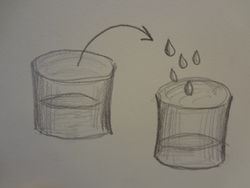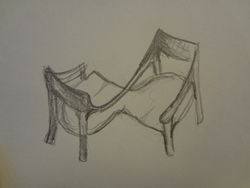atom11:Healy
From student
(Difference between revisions)
| Line 1: | Line 1: | ||
| + | <div style="float:left; margin-left:0px; width: 445px; overflow:hidden; " > | ||
| + | According to Mr. Healy, cataloguing the affordances of the environment is an act of abstraction. The power of the work of Peter Zumthor, Steven Holl or Daniel Libeskind lies in their ability to create an extra architectural concept, an idea that organizes and validates the following design decisions. | ||
| + | |||
| + | Abstraction or not, the research methodology we have employed has resulted in a database of information from which we can draw certain concrete conclusions about how humans experience their environment. The question of an “extra architectural concept” will be an integral part of how we proceed in Phase II. | ||
| + | |||
| + | '''One way of approaching this task is to absorb the spatial facts of the site and take a position based on these facts.''' | ||
| + | |||
| + | Libeskind’s Jewish Museum succeeds in this respect because the concept of the design is so closely related to way in which the Jews were living in Berlin at the time they were taken from their homes. In this way, Libeskind validates his concept for the form of the building and maps the horror of events in one gesture. | ||
| + | ---- | ||
| + | [[File:Water to water.JPG|250px]] | ||
| + | Water to water is intimate, like kissing. | ||
| + | |||
| + | [[File:Conversation chair.JPG|250px|]] | ||
| + | Conversation chair | ||
| + | |||
| + | '''"the most profound experience of intimacy is that we are born into well being"''' | ||
| + | ---- | ||
| + | </div> | ||
| + | </div> | ||
| + | |||
| + | |||
| + | |||
| + | |||
| + | |||
| + | |||
| + | |||
| + | |||
| + | |||
| + | |||
| + | |||
| + | |||
| + | |||
===Patrick Healy=== | ===Patrick Healy=== | ||
Senior Lecturer, [http://www.delftschoolofdesign.eu/staff Delft School of Design] | Senior Lecturer, [http://www.delftschoolofdesign.eu/staff Delft School of Design] | ||
Revision as of 14:27, 17 October 2011
</div>
Patrick Healy
Senior Lecturer, Delft School of Design
Professor Healy will be unable to attend our critique due to an impending deadline
According to Mr. Healy, cataloguing the affordances of the environment is an act of abstraction. The power of the work of Peter Zumthor, Steven Holl or Daniel Libeskind lies in their ability to create an extra architectural concept, an idea that organizes and validates the following design decisions.
Abstraction or not, the research methodology we have employed has resulted in a database of information from which we can draw certain concrete conclusions about how humans experience their environment. The question of an “extra architectural concept” will be an integral part of how we proceed in Phase II.

